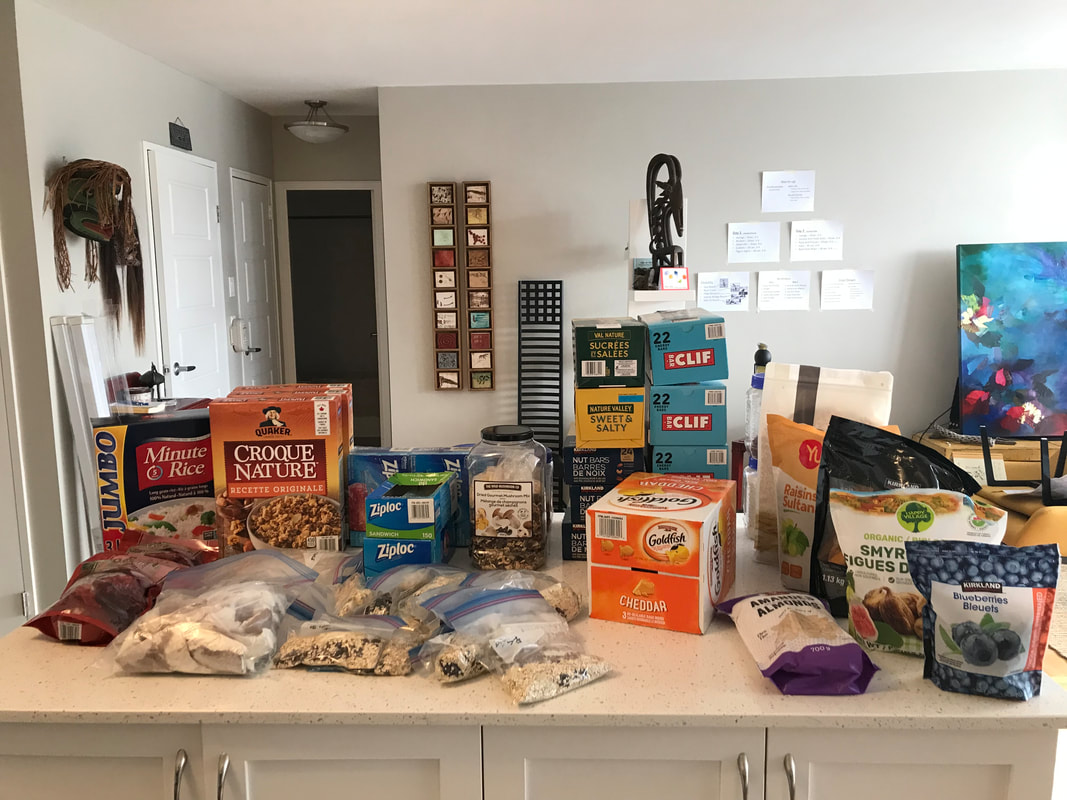The Great Divide Trail (GDT) is a complex undertaking. Well known as one of the hardest thru-hikes in the world, the GDT also forces the trekker to spend months creating a detailed and flexible itinerary in order to acquire all permits and reservations. Even the best plan does not guaranty a successful bid to journey on the GDT. Here is our approach (itinerary and preparation) for this breathtaking trek.
Planning for the GDT was more challenging than most other treks but thanks to the great work of the GDT association (website) and their members (Facebook and Blogs), that is where we acquired most of the information needed to create our work sheet(s).
|
The Parks’ websites added important information on the trails, closures, permit requirements, and reservation procedures.
From a few spreadsheets provided by the GDT Association website we compiled a list of all campsites along the GDT (# of pads at each camp), distances between each camp, type of reservations required (and cost), and popularity of each camp. |
From this complete list we created our own itinerary (we will post our itinerary in the fall 2022) for our thru-hike. We picked campsites that gave us reasonable distances each day - for us that's approximately 25 km/day. The cache locations (8 in total) were then identified at an average of 5 or so days interval. We had 'wild bearproof drops' which were primarily trailheads or intersections with quick access and 'business box drops' in each trail community (such as Field and Coleman).
|
The reservation process was complex as the GDT crosses 5 National and 7 Provincial Parks, as well as several Wilderness Areas. Each of these parks requires different permitting (for access) and reservation processes (for camping).
Here is what we learned for the 2022 season:
|
|
Financial:
|
|
Time Commitment:
|
Health and Fitness:
Skills:
- The GDT traverses the Rocky Mountains. Expect to climb and descend hundreds of meters daily on rough terrain. A good fitness base is required to minimise muscle soreness and injuries on the trail.
- We created a fitness program for the entire winter - increasing intensity slowly to be ready by the end of June.
Skills:
- This trail is a wilderness trail where orienteering is needed in some sections.
- Backcountry camping skills are a must, as is ‘leave no trace ‘camping practices and water/sanitation management. The wilderness is fragile and visited by many hikers. Do your part in keeping it pristine.
- This is grizzly country. It is important to know how to camp safely and how to deal with grizzly encounters. It is not just about keeping you safe but also to keep everyone around you, including the other campers in your area.
|
On the GDT, we carried all our equipment in our backpacks. The Wheelie (our cart) stayed home. We planned our caches to carry no more than 6 days of food at a time. The caches contained daily food packets, fuel for our stove, and some toiletries, first aid and repair kit items.
Two new pieces of gear this year were: 1) lighter backpacks, the Osprey Exos and Eja (48L), and the Jetboil stove and cook set. And 2) HOKA shoes, we've used them for years during training sessions and will now use them on the trail. We plan to have a second set of shoes if required in Field or Saskatchewan Crossing (in our resupply box). The Ten-Nine shoes and the Speedgoats were chosen for the season. There is additional information in our 'Equipment Section'. |
|
Our menu plan for this trek included home dehydrated meals (incl. dhal and chili) and a few combination meals created by blending dry soup bases with dry cheese, vegetables, and a starch (mac & cheese, jambalaya, stroganoff, etc.). On long days, we accounted for a few more snacks. On shorter days, we had the luxury of eating a warm breakfast of sweet potato porridge (homemade). We plan to bring more snack bars than we have in the past. They are lightweight and provide a good amount of carbs and calories.
Our daily food portions were packaged individually with different calorie counts for Julie and Simon. Different bodies require different solutions - we learned this the hard way on earlier thru-hikes. There is a bit of detail on our menu and cache list work sheets. |
Let’s face it, we are not getting any younger (Simon is 62 and Julie is 59). This is a challenging trek. Our winter fitness program built a good base. But as the new year came about, we started increasing our workouts.
For detailed information on our exercise routines check out our 'Exercise' page.
GDT Pre-Trail BlogGDT Blog by section
|

















